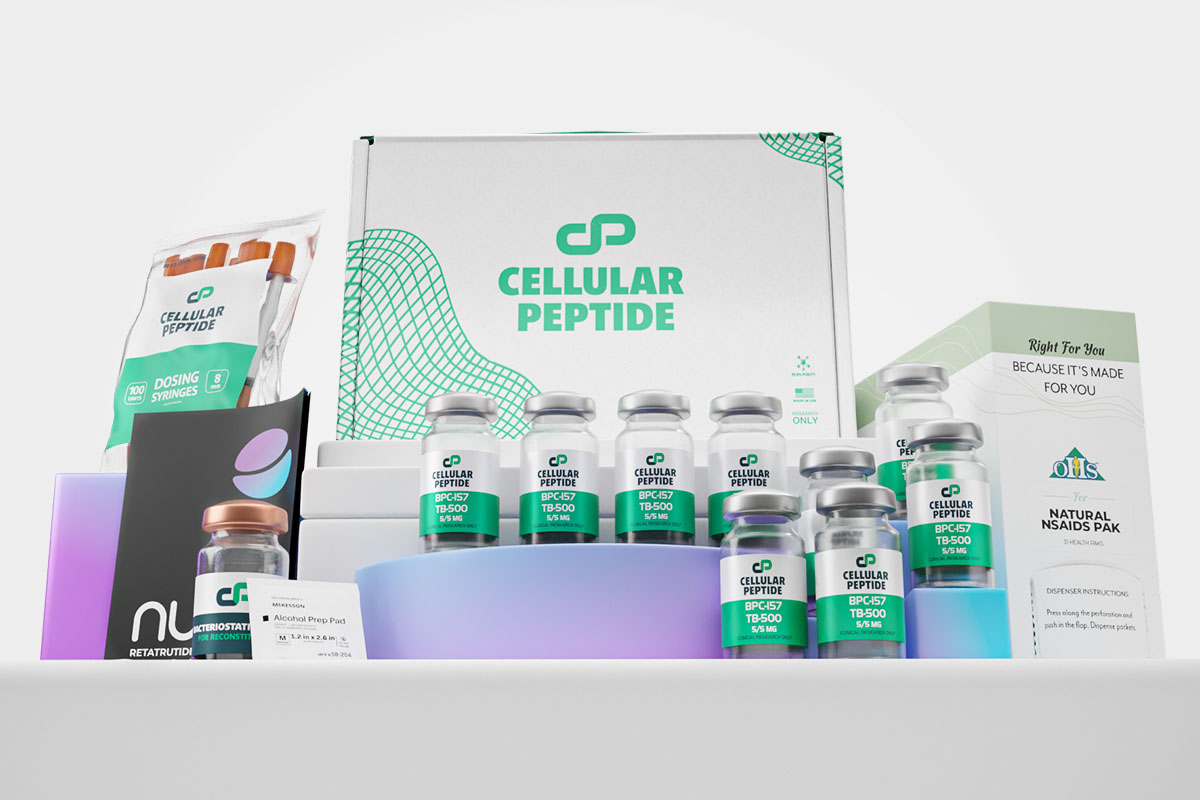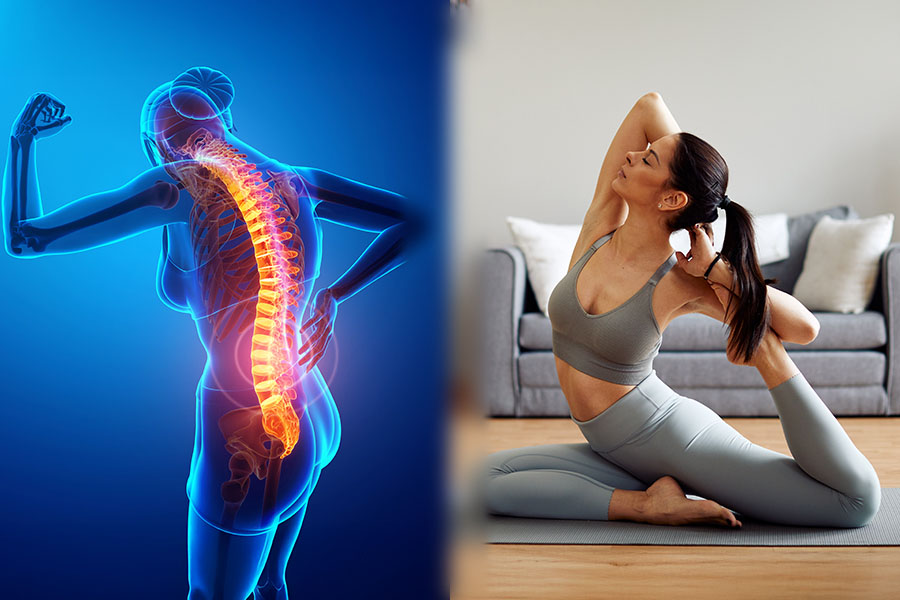What Is Inflammation?
Inflammation is your immune system’s built-in alarm and cleanup process. When you get a cut, strain a joint, or catch a virus, immune cells release chemical messenger such as interleukin-6 (IL-6) and prostaglandins that widen blood vessels and guide white blood cells to the area. That’s why a new injury looks red, warm, puffy, and sore: those are classic inflammation symptoms during acute (short-term) inflammation. In blood work, a general marker called C-reactive protein (CRP) often rises during this response.
In a healthy situation, the response turns on and then resolves. Problems start when low-grade signals smolder for months chronic inflammation which can wear on tissues and metabolism over time.
Acute vs. Chronic, The Key Difference
a. Acute inflammation: sudden, focused, and self-limited. It helps you respond to injury or infection and then quiets down.
b. Chronic inflammation: ongoing, low-grade signaling that may stay active because daily stressors keep nudging the immune system. This is where lifestyle patterns matter most.
What Causes Inflammation to Linger?
Chronic inflammation is rarely one single cause. Think of it as a stack of small inputs that add up.
1) Metabolic Load and Visceral Fat
Visceral adipose tissue (belly fat around the organs) acts like an endocrine organ. It releases cytokines (sometimes called adipokines) that can keep immune activity simmering. This is one reason weight gain and inflammation often reinforce each other. Improving body composition tends to lower the inflammatory load over time.
2) Diet Patterns (Why Mediterranean-Style Helps)
Highly processed eating patterns are associated with higher inflammatory markers. In contrast, a Mediterranean-style diet—built around vegetables, fruits, legumes, whole grains, nuts, seeds, extra-virgin olive oil, herbs/spices, and seafood—has been associated with lower CRP and IL-6. If you’re searching “what is anti inflammation” in food terms, it’s really about the overall pattern, not a single “superfood.”
3) Low Movement and Deconditioning
Regular, appropriately scaled exercise programs (aerobic + resistance) are linked with reducing inflammation markers over time. One all-out workout can temporarily raise markers, but consistent, moderate training nudges the baseline in a healthier direction.
4) Sleep Debt
Several nights of short sleep can nudge CRP and IL-6 upward. Over months, poor sleep and inflammation can reinforce each other. A steady schedule and a simple wind-down routine help.
5) Alcohol and the Gut Barrier
Does alcohol cause inflammation? Heavy or frequent alcohol can disrupt the gut barrier and microbiome, letting bacterial fragments leak into the bloodstream. That can promote inflammatory signaling. The less you drink, the lower this risk.
Does Inflammation Cause Weight Gain?
It’s a two-way connection. Extra visceral fat supports a low-grade inflammatory state. Those signals interact with insulin and leptin pathways involved in appetite and energy balance, which can make weight management harder. Addressing lifestyle levers and body composition together helps break the loop.
Natural Ways to Reduce Inflammation
These steps support healthy inflammatory balance. They are practical, not medical treatments.
1. Build the Pattern (Anti Inflammatory Foods That Fit Real Life)
Center most meals on plants, legumes, whole grains, nuts and seeds, extra-virgin olive oil, herbs/spices, and seafood (especially fatty fish twice per week). Commonly studied foods within this pattern include:
a. Olive oil (polyphenols)
b. Salmon, sardines (marine omega-3s: EPA/DHA)
c. Leafy greens and berries (polyphenols and carotenoids)
d. Beans and lentils (fiber and micronutrients)
A US-friendly plate idea: Half non-starchy vegetables; a palm of protein (fish, poultry, tofu/tempeh); a cupped-hand of whole grains or beans; a thumb of olive-oil vinaigrette. Yogurt or berries for dessert.
2. Move Most Days (Repeatable Beats Extreme)
Aim for 150–300 minutes per week of moderate activity (brisk walking, cycling, swimming) plus 2 days of resistance training. Some today beats perfect tomorrow.
3. Guard Your Sleep Window
Most adults do best with 7–9 hours. Keep a regular schedule, dim light at night, a cool/dark room, and limit late caffeine and alcohol. If you snore loudly or wake unrefreshed, ask a clinician about screening.
4. Alcohol, Less Is Better for Balance
Keep intake light or consider taking days off because lower intake helps maintain a healthier inflammatory baseline.
5. Targeted Nutrients (Adjuncts, With Clinician Guidance)
Marine omega-3s (EPA/DHA) from fish or supplements are often associated with lower inflammatory biomarkers within dietary-pattern studies.
Ginger and other spice polyphenols can show small-to-moderate biomarker shifts in certain settings; quality and dosing matter.
These are “natural anti inflammatories” only in the sense that they support balance. Results vary by person and dose. Talk with a clinician first, especially if you take medications.
Simple, Structured Support, The Wolverine Protocol (12 Weeks)
A 12-week, clinician-guided plan that supports recovery and helps maintain healthy joint comfort.

What it is
A program developed by doctors and nutritionists featuring BPC-157 & TB-500. It’s designed to support your body’s normal repair environment, promote joint comfort, and help maintain healthy tissue function on top of the lifestyle foundations above.
Why people choose it
a. Clear weekly roadmap for 12 weeks (no guesswork).
b. Access to health professionals for questions and adjustments.
c. Quality you can point to: cold-shipped to help preserve potency; third-party tested for purity and efficacy; manufactured in a GMP-certified facility.
d. Clinical oversight: protocol IRB-reviewed (Institutional Review Board) for clinical use.
e. Everything included: step-by-step instructions and supplies to follow the plan.
We don’t claim to cure or treat any medical conditions. This protocol is designed to support your body’s natural recovery environment and help maintain comfortable movement complementing your ongoing nutrition, exercise, and sleep habits.
Each package also includes a complimentary Natural NSAIDs Pack, featuring glucosamine, chondroitin, MSM, ginger, omega-3s, and an anti-inflammatory enzyme blend. These nutrients are formulated to support joint comfort and mobility as your healthy habits take hold.
See if the Wolverine Protocol is a good fit for you.
References
1. Ellulu, M. S., Patimah, I., Khaza’ai, H., Rahmat, A., & Abed, Y. (2017). Obesity and inflammation: the linking mechanism and the complications. Archives of Medical Science, 13(4), 851–863. https://doi.org/10.5114/aoms.2016.58928
2. Engen, P. A., Green, S. J., Voigt, R. M., Forsyth, C. B., & Keshavarzian, A. (2015). The Gastrointestinal Microbiome: Alcohol Effects on the Composition of Intestinal Microbiota. Alcohol Research : Current Reviews, 37(2), 223–236.
3. Li, K., Huang, T., Zheng, J., Wu, K., & Li, D. (2014). Effect of marine-derived n-3 polyunsaturated fatty acids on C-reactive protein, interleukin 6 and tumor necrosis factor α: a meta-analysis. PloS One, 9(2), e88103. https://doi.org/10.1371/journal.pone.0088103
4. Medzhitov, R. (2008). Origin and physiological roles of inflammation. Nature, 454(7203), 428-435. https://doi.org/10.1038/nature07201
5. Mullington, J. M., Simpson, N. S., Meier-Ewert, H. K., & Haack, M. (2010). Sleep loss and inflammation. Best Practice & Research Clinical Endocrinology & Metabolism, 24(5), 775–784. https://doi.org/10.1016/j.beem.2010.08.014
6. A. R., & Olefsky, J. M. (2017). Inflammatory mechanisms linking obesity and metabolic disease. The Journal of Clinical Investigation, 127(1), 1–4. https://doi.org/10.1172/JCI92035
7. Tsigalou, C., Konstantinidis, T., Paraschaki, A., Stavropoulou, E., Voidarou, C., & Bezirtzoglou, E. (2020). Mediterranean Diet as a Tool to Combat Inflammation and Chronic Diseases. An Overview. Biomedicines, 8(7), 201. https://doi.org/10.3390/biomedicines8070201

